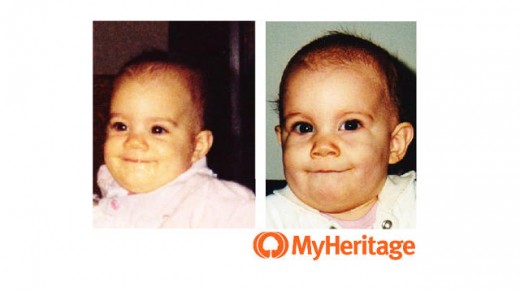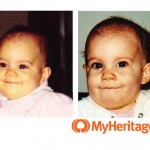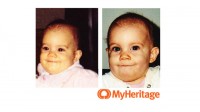Ancestors, Inc.: inside the outstanding rise Of The family tree business
MyHeritage asked its eighty million participants for photographs of ancestors that strongly resembled them, and the household-tree trade grew all over again.
When MyHeritage, a genealogy site with roughly 80 million contributors, sent out a call to its customers a few months ago for pictures of individuals who strongly resemble their ancestors, responses poured in from all over the world. approximately 110 customers sent images as a part of a competition to win a household photo shoot. the various photos looked as in the event that they had been of the same particular person.
the simple availability of images and fast scanning tech turns a course of that might have taken months previously into mere seconds.
while MyHeritage was leveraging the pictures for a person merchandising, they’re additionally the newest example of an ongoing palms race amongst genealogy services to attract users, construct content material bases, and—crucially—secure household data, mementos, and historical papers that their competitors don’t have.
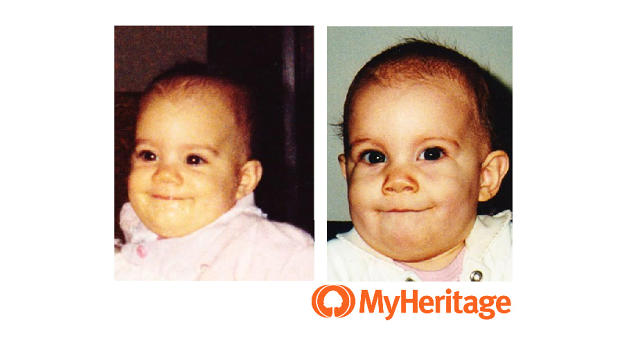
writer and journalist AJ Jacobs, who is presently working on a book about genealogy, told quick firm that “web pages have turbocharged passion in genealogy. there are plenty of individuals who got hooked by using the websites, and want to go deeper and hire professional genealogists to do extra in-depth analysis. it is because pro genealogists use different instruments, together with actually going to physical archives that are not but on-line.” Jacobs recently held the global domestic Reunion in new york, and unique guests integrated David Blaine, George H.W. Bush (by the use of video feed), and Henry Louis Gates, a Harvard professor and host of the family tree-looking PBS sequence discovering Your Roots. The experience, billed as “the largest family Reunion in history,” used to be performed together with MyHeritage, Ancestry.com, and a few different family tree web sites. any other reunion is in the works for 2017.
family tree As big business
MyHeritage, an Israeli firm that used to be founded in 2005 to focus on a worldwide target audience, is without doubt one of the big gamers on the family tree block. the company, which operates MyHeritage in addition to a associate website online called Geni, competes with American firm Ancestry and a host of smaller contenders.
the 2 companies function the usage of different business models. Ancestry works on a subscriber model, with month-to-month memberships ranging from $19.ninety nine for a bare-bones package to $44.99 for an all-inclusive package and reductions for annual subscriptions. MyHeritage and Geni as a substitute go for a freemium edition the place access to the site is free, but customers pay varying charges for standalone tool or additional get entry to to data.
For Ancestry, MyHeritage, and their rivals, family tree is large business. fanatics are likely to spend large bucks—the moderate cost of finding roots levels from $1,000 to $18,000, in keeping with consulting firm international trade Analysts.
additionally, exporting data from one of the crucial products and services to some other is a hassle, and signal-usatend to have a community effect. If one or two loved ones with an pastime in family tree sign up for a provider, their cousins, aunts, and uncles come alongside as neatly. If a carrier is ready to stable laborious-to-find instruments like old domestic pictures, church data, or scans of antique documents, that provides them an facet versus their opponents.
A representative for Ancestry instructed quick firm that “We’ve created multiple paths for anyone to discover more about their domestic historical past, and in flip themselves, whether via collaborating on a household tree with a relative, beginning a family tree on our facebook app or cell Ancestry app, or taking an Ancestry DNA check. whereas we don’t observe information on more than one member of the family sign-ups, we do imagine our web site has network impact traits.”
the way households are analyzed additionally varies web page by way of website online. In an email, MyHeritage communications director Aaron Godfrey explained that “Geni is enthusiastic about constructing a global domestic tree of humanity, and anybody can contribute to it and add profiles. It’s kind of like a Wikipedia of household history. meanwhile, MyHeritage means that you can uncover, protect and share your loved ones historical past to your personal non-public domestic site.”
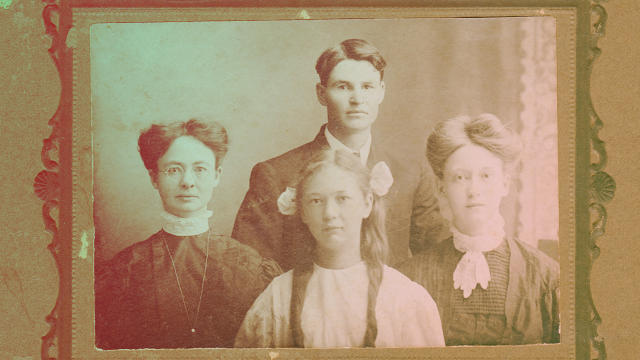
The resources Race
in the case of the vintage family footage shown above, MyHeritage reached out to contributors who opted in to receiving e-mail blasts, and who read the company’s weblog.
Stavit Shalev, the director of the Institute of Genetics at Israel’s Emek medical heart, informed fast firm via email that it is quite standard for folk to resemble far-off ancestors extra so than the ancestors’ personal youngsters do or did.
“every individual has their own makeup of genetic subject matter,” he instructed us. “Even brothers don’t get precisely the same characteristics of their folks. There are characteristics which are dominant where some features are enhanced, whereas others are less affected. A grandchild can seem to be much like an excellent-grandparent because they have got a large genetic similarity of 12.5%. however, the remainder of the genetic make-up can include options with a purpose to look very completely different.”
In other phrases, whether a toddler grows as much as strongly resemble a parent or an ancestor is more or less like rolling the cube. a child can resemble their nice-grandparents way more than their folks, or be a spitting image of their oldsters with quite little resemblance to their grandparents.
For MyHeritage, getting customers to share pictures of their ancestors or of their records is a fascinating industry strategy. Turning themselves right into a clearinghouse for information about ancestry approach conserving users. The intention is to have users share photos and different content associated to genealogy by the use of their website online, moderately than on fb and through e mail—and especially with the competition.
so far, greater than seventy eight million photographs and scanned documents have been uploaded to MyHeritage by means of users.
part of the problem for both MyHeritage and Ancestry is making sure beginner genealogists pay them, reasonably than (or as a minimum along with) outfits reminiscent of 23andMe and nationwide Geographic’s Genographic challenge. both these companies focal point their effort on DNA analysis that tells customers about their “deep ancestry”—their ethnic heritage going again hundreds of years and the geographic distribution of their blood ancestors. as a substitute, the records of Ancestry and MyHeritage are mainly inquisitive about ancestors who lived many years or centuries in the past. 23andMe’s focal point, in contrast, is the place your ancestors have been at the rise of agriculture.
For all these websites, there may be also an additional challenge: increasing the breadth and width of their user base. newbie genealogists are overwhelmingly Caucasian (because the above slideshow underscores) and from center-classification or upper-heart-class backgrounds, at least in North the us. regardless of the existence of groups such as the Afro-American historical and Genealogical Society and outreach through other genealogical businesses, this has been a unbroken difficulty for the genealogy group. Asian customers are stymied through the destruction of historical records in geopolitical traumas equivalent to World conflict II, the Cultural Revolution, the Korean struggle, and the Partition of India, while African-American customers are challenged via the relative lack of written information from sooner than the Civil battle.
As Gates of discovering Your Roots bluntly places it, “finding data from ahead of the Civil warfare is a roadblock for many when gaining knowledge of their African-American heritage.”
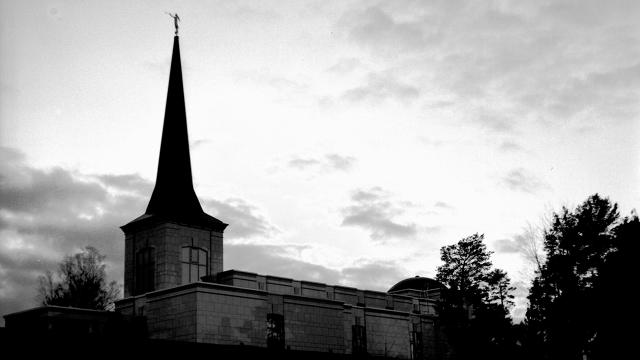
The Mormon Connection
of their seek for knowledge, family tree firms regularly flip to a an unlikely supply: the Mormon Church.
though now majority owned by way of private equity agency Permira, Ancestry.com was based with the aid of two Mormon graduates of Brigham younger university, Paul B. Allen and Dan Taggart. the corporate’s headquarters are still in Utah.
The Church of Latter-Day Saints is well known for its passion in family tree. Mormon faith beliefs put an emphasis on uncovering and reconstructing household trees (a convention which has occasionally led the Church into controversy because of the practice of baptism for the dead), and both the Mormon Church and personal companies owned by means of Mormons had been on the forefront of the genealogy trade for decades.
that is why the Israel-based totally MyHeritage made a take care of the Mormon Church’s own genealogy site, FamilySearch. FamilySearch, which sits on top of a huge cache of historic records and household bushes, entered right into a useful resource-sharing partnership with MyHeritage. In alternate for sharing their information, FamilySearch was once ready to leverage engineering and again-finish instruments from MyHeritage.
Ancestry.com additionally entered right into a equivalent handle FamilySearch as well, putting an emphasis on simply how troublesome the fight for unique information has change into to family tree web sites. There used to be additionally a bonus for active Mormons as neatly: As part of both agreements, Church participants were given free top class subscriptions to both Ancestry.com and MyHeritage.
FamilySearch, which is a carrier in an instant equipped with the aid of the Church of Latter-Day Saints, has 6.four million registered users, 267,897 distinctive visits daily, and more than 1 billion records in their domestic tree.
(103)

